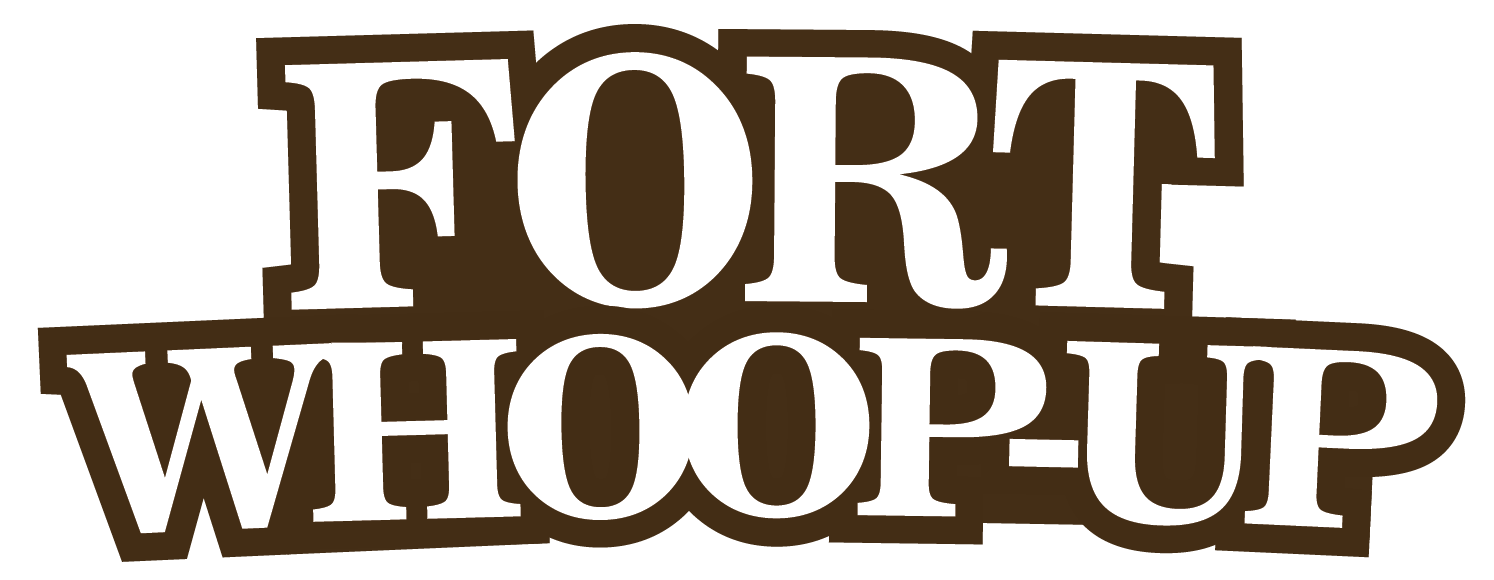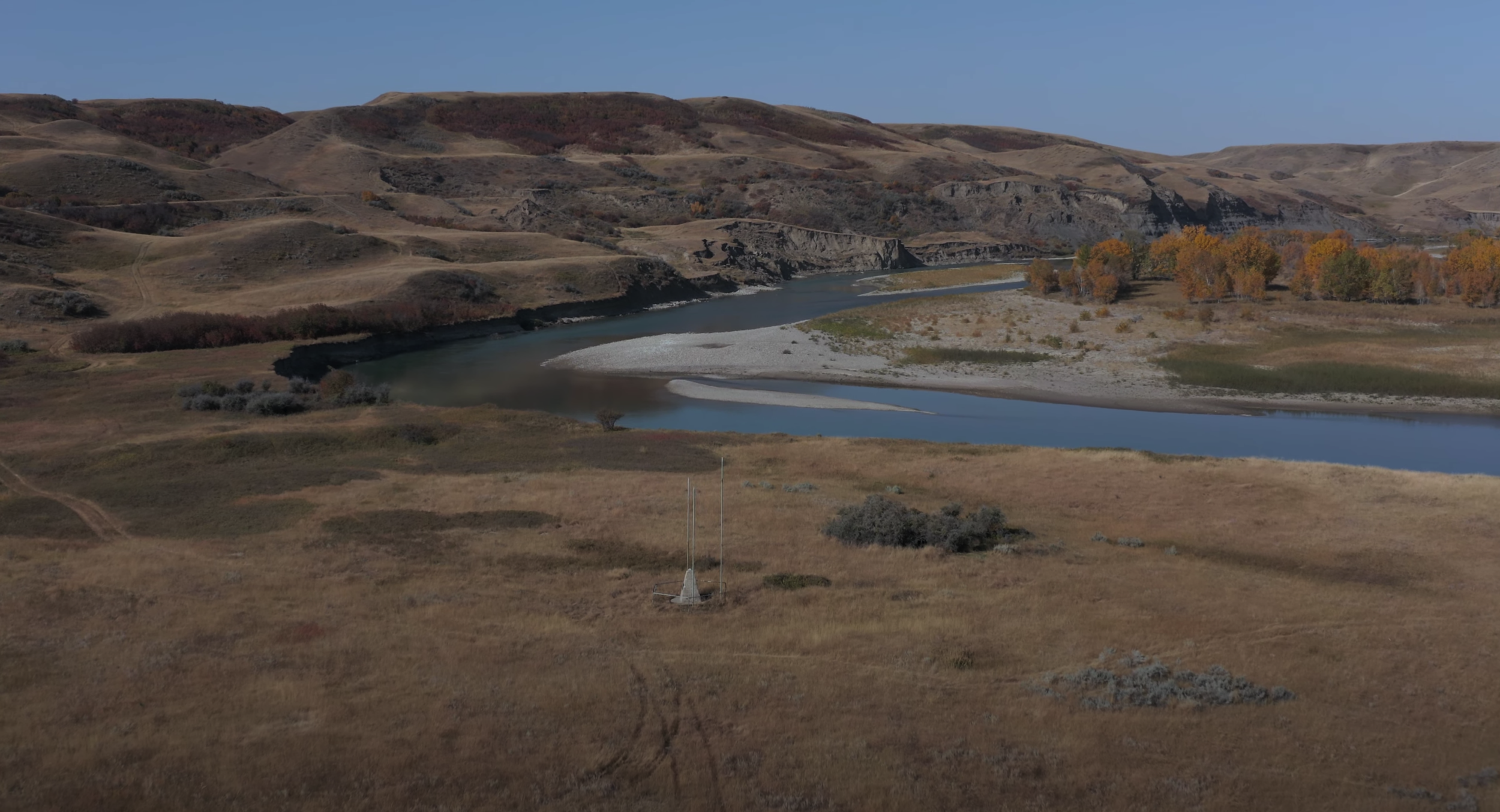Fort Whoop-Up Cannon Belongs to the Citizens of Lethbridge
A key artifact in the telling of the Fort Whoop-Up story is the Three-Pounder Field Gun, also known as the Fort Cannon. The cannon is the most documented artifact connected to Lethbridge’s history.
Bill Peta from the Fort Whoop-Up Black Powder Club loading a replica cannon at Fort Whoop-Up.
Photo courtesy of Fort Whoop-Up.
May 18th is International Museum Day. It is a day to celebrate the preservation and sharing of objects and their stories. The volunteers and staff of the Galt are committed to this public service at the museum and now, at Fort Whoop-up. A key artifact in the telling of the Fort Whoop-Up story is the Three-Pounder Field Gun, also known as the Fort Cannon. The cannon is the most documented artifact connected to Lethbridge’s history.
The cannon was brought to Fort Whoop-Up country by whiskey traders and has resided as a part of Lethbridge’s history and heritage for close to 146 years. From the 1870s to 1892 the cannon was located at the original Fort Whoop-Up. From 1892 to 1929 it belong to Lethbridge resident John D. Higinbotham. In 1929 Higinbotham entrusted care of the cannon to the City of Lethbridge and the cannon it took its place in Galt Gardens.
The City of Lethbridge placed the artillery piece in the Sir Alexander Galt Museum’s collection in 1973. Where it was housed until the Fort Whoop Society requested its move to the Fort Whoop-Up replica in Indian Battle Park. In June 1997 a letter to the Fort Whoop-Up Interpretive Society noted “The Fort Whoop-Up Field Gun represents a unique artifact, significant in the interpretation of [the] facility’s mandate, as well as the origins of the present day community of Lethbridge. As a material resource, its historic value is priceless.” After much deliberation, ownership of the Fort Field Gun was transferred from the Galt to Fort Whoop-Up where its story continued to be told and could be enjoyed by citizens and visitors alike.
The cannon brings Lethbridge a deep connection to our citizens’ sense of place. The Galt Museum & Archives requested the return of only one artifact from the previous operators of the Fort Whoop-Up Interpretive Centre: the Three-Pounder fort cannon. This cannon is not relevant to other towns or cities. We encourage the society to reconsider and return the cannon to the City collection with the Galt Museum & Archives/Fort Whoop-up.
Finding Fort Whoop-Up
Much more of the story of Fort Whoop-Up has been lost to time, people and natural events.
Drone footage of the cairn and empty flag poles at the original site of Fort Whoop-Up.
In the fall of 2012, the exhibit at the Galt Museum & Archives Uncovering Secrets: Archaeology in Southern Alberta highlighted 15 sites and features, telling human stories found under the soils and across the landscape of the area, including the original Fort Whoop-Up.
By the late 1800s, buffalo hides used for warm coats and strong industrial belts became the major item of trade on the western plains. Between 1869 and 1874, there was no official Canadian presence preventing American traders from building Fort Hamilton and then, after Fort Hamilton burned down, from building Fort Whoop-Up nearby. There was no official presence preventing them from trading whiskey, guns, knives, blankets, beads, and food items with the Niitsitapi, or Blackfoot, in exchange for valuable bison robes.
With the arrival of the North West Mounted Police (NWMP) in 1874, most of the whiskey traders quit the business. From 1876 until 1888, when a fire destroyed much of the fort, the NWMP rented space to use as an outpost.
The site of the fort was surveyed and excavated by different archaeology teams in the 1970s, the 1980s and the 1990s.
The first team found the remains of a corner bastion, some segments of the original walls, as well as a stone-lined well.
The second team found a stable, a storeroom, and living quarters. They recovered some food-related artifacts and a variety of medicinal bottles used for personal alcohol consumption.
An archaeology team from the University of Lethbridge verified the dimensions of the fort and found charred soil, which confirmed that the 1888 fire had occurred in the NWMP quarters. The team excavated the trade room, uncovering buttons, ammunition, brass beads, and tacks. They also excavated trenches to determine the outline of the palisade surrounding the fort’s compound.
Much of the story of Fort Whoop-Up has been lost. Time literally eats away at items made of leather, wood, and other organic materials. Floods and loooting at the site has removed much of the material evidence of the fort.
Some artifacts related to Fort Whoop-up and other archeological sites are included in the collections at the Galt Museum & Archives at collections.galtmuseum.com.



